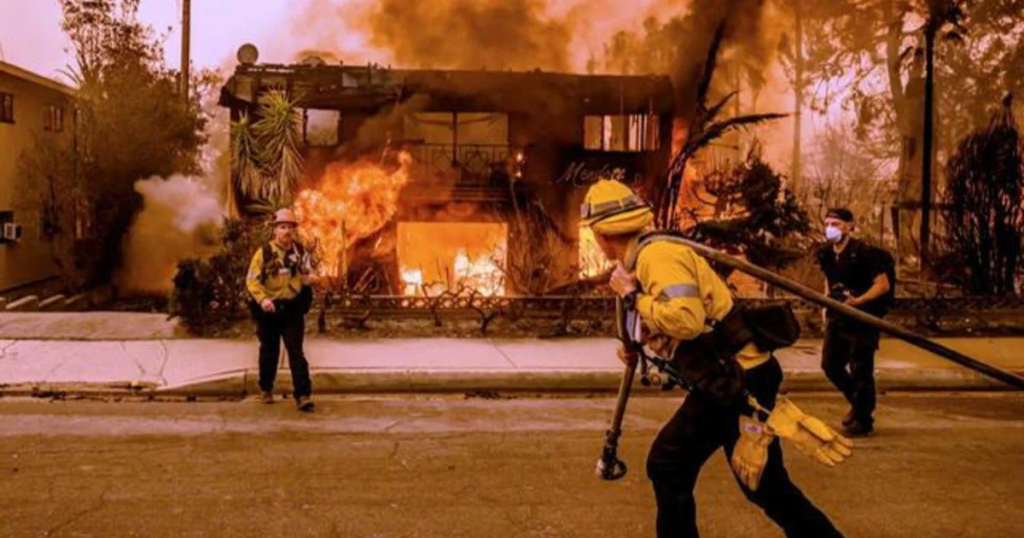Los Angeles is currently facing a dire situation as multiple wildfires ravage the region, leaving a trail of destruction and despair. Among the most devastating are the Palisades Fire and the Eaton Fire, which have collectively scorched over 40,500 acres, destroyed thousands of structures, and claimed at least 25 lives. These fires are a stark reminder of the increasing frequency and intensity of natural disasters fueled by climate change and urban sprawl.

Key Details of the Wildfires
Palisades Fire
- Location: Originating near the Pacific Palisades neighborhood.
- Size: Approximately 23,700 acres burned.
- Impact: Mandatory evacuations have been ordered for sections along the Pacific Coast Highway and surrounding areas. Emergency shelters, like the Westwood Recreation Center, have been set up to accommodate displaced residents.
- Containment Status: Firefighters are battling to contain the blaze, but strong winds and dry conditions are complicating their efforts.
Eaton Fire
- Location: Began in Eaton Canyon in the Altadena–Pasadena region.
- Size: Approximately 10,600 acres burned.
- Impact: This fire has led to evacuations in Pasadena and neighboring areas. Critical infrastructure, including homes and medical centers, has been severely affected.
- Containment Status: Efforts to control the fire continue as challenging terrain and high winds hamper progress.
Contributing Factors
The severity of these wildfires can be attributed to several factors:
- Santa Ana Winds: Gusts exceeding 80 mph have accelerated the spread of the flames, making containment efforts even more challenging.
- Prolonged Drought: Years of drought have left vegetation extremely dry, creating perfect conditions for wildfires to ignite and spread.
- Urban Encroachment: The expansion of urban areas into wildfire-prone regions has increased both the frequency of such disasters and their human toll.
Human and Economic Impact
The toll on human lives and communities is staggering:
- Displacement: Tens of thousands of residents have been evacuated, many unsure of when they can return home.
- Property Loss: Over 12,300 structures have been damaged or destroyed, leaving countless families without shelter.
- Economic Costs: The financial impact is estimated at $52–$57 billion, making this one of the most expensive wildfire events in California’s history.
- Social Strain: Reports of looting and price gouging have surfaced, prompting authorities to implement curfews in affected areas.
The Road Ahead
Firefighters, supported by volunteers and emergency responders, are working tirelessly to bring the situation under control. However, the battle is far from over. With weather forecasts predicting continued high winds through the week, conditions remain volatile. Residents are urged to stay informed through official channels and adhere to evacuation orders and safety advisories.
What Can Be Done?
As wildfires become an increasingly common threat, proactive measures are essential:
- Community Preparedness: Encouraging communities to develop and practice evacuation plans.
- Improved Infrastructure: Investing in fire-resistant building materials and creating defensible spaces around properties.
- Legislative Action: Implementing policies that address climate change and reduce the risk of wildfires.
A Call for Unity
In times of crisis, unity and resilience shine through. The people of Los Angeles have shown incredible strength and solidarity, from volunteers aiding evacuees to firefighters risking their lives on the front lines. Let this tragedy serve as a wake-up call for collective action to mitigate the effects of climate change and better prepare for future disasters.
As the fires continue to burn, let us keep the affected communities in our thoughts and work towards a future where such tragedies are less frequent and devastating.